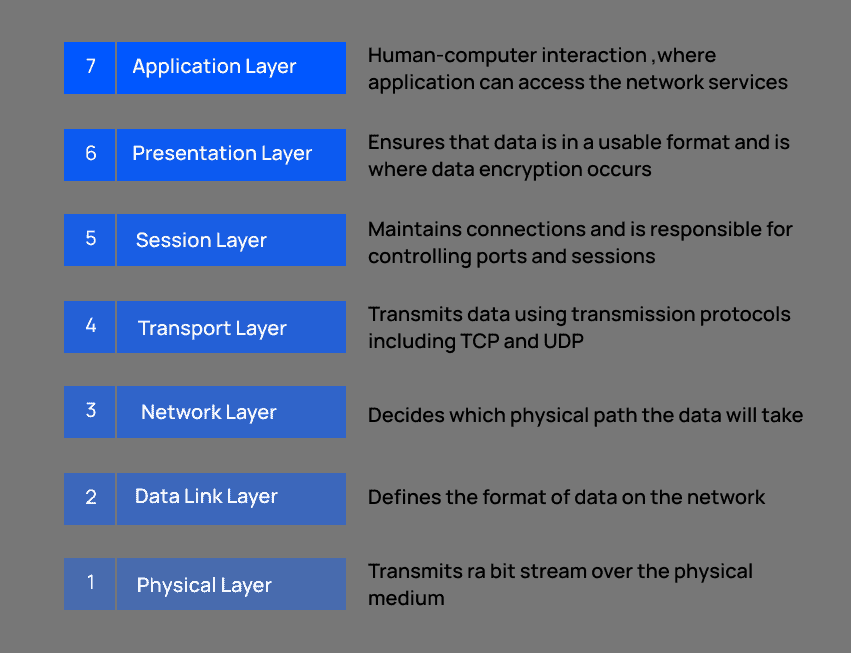Table of Contents
In this article, you’ll learn about What is OSI Model, 7 layers of the OSI Model and Advantages of OSI Model.
What is OSI Model?
Open System Interconnect is an open standard for all communication systems. OSI model is established by International Standard Organization (ISO). It was the first standard model for network communications, adopted by all major computer and telecommunication companies in the early 1980s.
7 layers of the OSI Model
7 layers of the OSI Model are as follow along with description of each.

- Application Layer: This layer is responsible for providing an interface to the application user. This layer encompasses protocols that directly interact with the user. A few examples of application layer protocols are the Hypertext Transfer Protocol (HTTP), File Transfer Protocol (FTP), Post Office Protocol (POP), Simple Mail Transfer Protocol (SMTP), and Domain Name System (DNS).
- Presentation Layer: The presentation layer prepares data for the application layer. It defines how two devices should encode, encrypt, and compress data so it is received correctly on the other end. The presentation layer takes any data transmitted by the application layer and prepares it for transmission over the session layer.
- Session Layer: This layer maintains sessions between remote hosts. For example, once user/password authentication is done, the remote host maintains this session for a while and does not ask for authentication again in that time span.
- Transport Layer: This layer is responsible for end-to-end delivery between hosts.
- Network Layer: This layer has two main functions. One is breaking up segments into network packets, and reassembling the packets on the receiving end. The other is routing packets by discovering the best path across a physical network. The network layer uses network addresses (typically Internet Protocol addresses) to route packets to a destination node.
- Data Link Layer: This layer is responsible for reading and writing data from and onto the line. Link errors are detected at this layer.
- Physical Layer: This layer defines the hardware, cabling, wiring, power output, pulse rate, etc.
Easy way to remember name of all layers "All People seems to need data processing."
Advantages of OSI Model
The OSI model helps users and operators of computer networks:
- Determine the required hardware and software to build their network.
- Understand and communicate the process followed by components communicating across a network.
- Perform troubleshooting, by identifying which network layer is causing an issue and focusing efforts on that layer.
The OSI model helps network device manufacturers and networking software vendors:
- Create devices and software that can communicate with products from any other vendor, allowing open interoperability
- Define which parts of the network their products should work with.
- Communicate to users at which network layers their product operates – for example, only at the application layer, or across the stack.